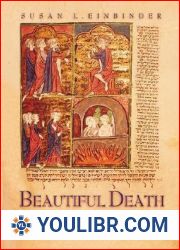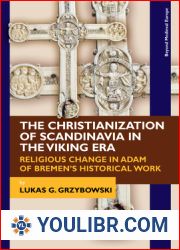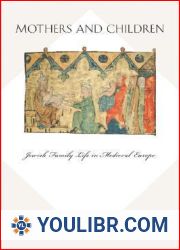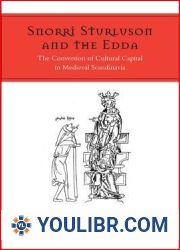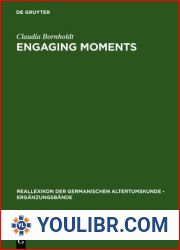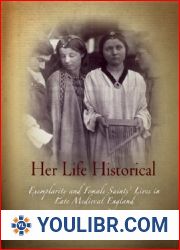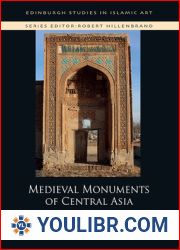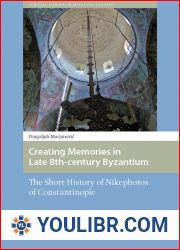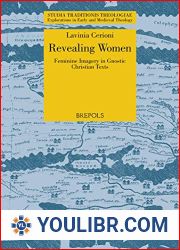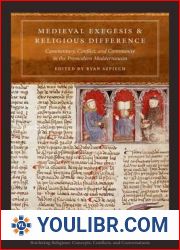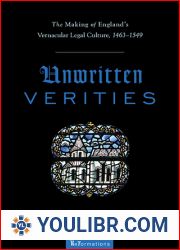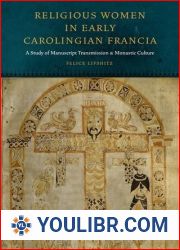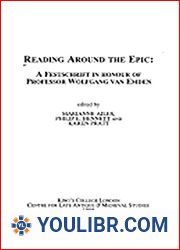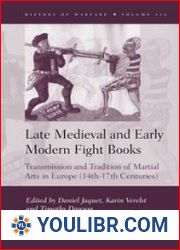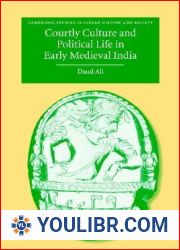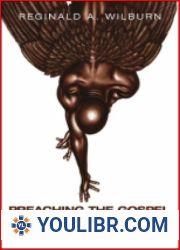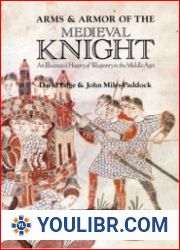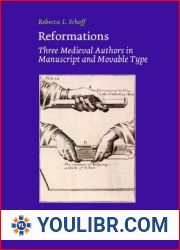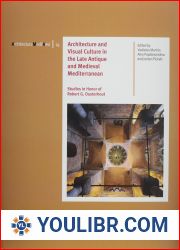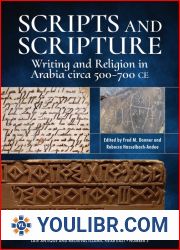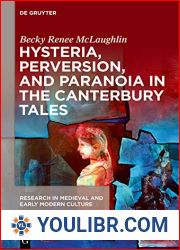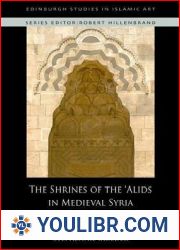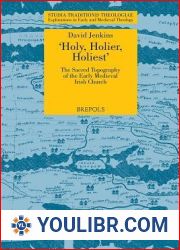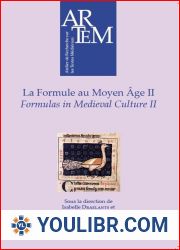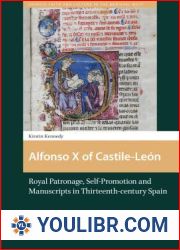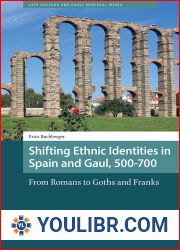
BOOKS - MILITARY HISTORY - Henry II. A Medieval Soldier at War, 1147–1189

Henry II. A Medieval Soldier at War, 1147–1189
Author: John Hosler
Year: 2007
Format: PDF
File size: 12.6 MB
Language: ENG

Year: 2007
Format: PDF
File size: 12.6 MB
Language: ENG

It demonstrates that he was an important innovator who introduced new military techniques into Western Europe and argues that the development of these techniques was crucial for the survival of the Angevin Empire and the unity of France. Innovations include the creation of large armies which overawed lesser lords; the use of mercenaries to supplement feudal levies; the introduction of siege engines; the mastery of psychological warfare; and the employment of the bowmen at battles and sieges. The book also explores the significance of Henry's martial experience both for his reign and the development of Western European civilization. Henry II, a Medieval Soldier at War 1147–1189, is a groundbreaking study that sheds light on the military career of King Henry II of England, a pivotal figure in the history of Western Europe during the twelfth century. Historians have often portrayed Henry as a cautious and limited commander, but this book challenges this view by offering a comprehensive examination of his innovative military techniques and their impact on the Angevin Empire and the unity of France.
Это демонстрирует, что он был важным новатором, который внедрил новые военные методы в Западную Европу, и утверждает, что развитие этих методов имело решающее значение для выживания Анжуйской империи и единства Франции. Инновации включают в себя создание больших армий, которые превосходят меньших лордов; использование наёмников для дополнения феодальных поборов; введение осадных машин; овладение психологической войной; и занятость боуменов при сражениях и осадах. В книге также исследуется значение боевого опыта Генриха как для его правления, так и для развития западноевропейской цивилизации. «Генрих II, средневековый солдат на войне 1147 - 1189» - новаторское исследование, проливающее свет на военную карьеру короля Англии Генриха II, ключевую фигуру в истории Западной Европы в течение двенадцатого века. Историки часто изображали Генриха как осторожного и ограниченного командира, но эта книга бросает вызов этой точке зрения, предлагая всесторонний анализ его инновационных военных методов и их влияния на Анжуйскую империю и единство Франции.
Cela démontre qu'il a été un innovateur important qui a introduit de nouvelles méthodes militaires en Europe de l'Ouest et affirme que le développement de ces méthodes a été crucial pour la survie de l'Empire d'Anjou et l'unité de la France. L'innovation comprend la création de grandes armées qui dépassent les petits seigneurs ; l'utilisation de mercenaires pour compléter les prélèvements féodaux ; l'introduction de machines de siège ; maîtrise de la guerre psychologique ; et l'emploi des Bowmen dans les batailles et les sièges. livre explore également l'importance de l'expérience de combat d'Henry à la fois pour son règne et pour le développement de la civilisation de l'Europe occidentale. « Henri II, soldat médiéval dans la guerre 1147-1189 » est une étude novatrice qui met en lumière la carrière militaire du roi Henri II d'Angleterre, une figure clé de l'histoire de l'Europe occidentale au XIIe siècle. s historiens ont souvent décrit Henry comme un commandant prudent et limité, mais ce livre récuse ce point de vue en proposant une analyse complète de ses méthodes militaires innovantes et de leur impact sur l'Empire d'Anjou et l'unité de la France.
Esto demuestra que fue un innovador importante que introdujo nuevos métodos militares en occidental, y sostiene que el desarrollo de estos métodos fue crucial para la supervivencia del Imperio de Anjou y la unidad de Francia. La innovación incluye la creación de grandes ejércitos que superen a los señores más pequeños; el uso de mercenarios para complementar las extorsiones feudales; introducción de máquinas de asedio; dominar la guerra psicológica; y el empleo de los bowmen en batallas y asedios. libro también explora la importancia de la experiencia combativa de Enrique tanto para su reinado como para el desarrollo de la civilización de Occidental. «Enrique II, un soldado medieval en la guerra 1147-1189» fue un estudio pionero que arrojó luz sobre la carrera militar del rey Enrique II de Inglaterra, una figura clave en la historia de occidental durante el siglo XII. historiadores a menudo han descrito a Enrique como un comandante cauteloso y limitado, pero este libro desafía este punto de vista, ofreciendo un análisis completo de sus innovadoras técnicas militares y su influencia en el Imperio de Anjou y la unidad de Francia.
Isso demonstra que ele foi um inovador importante que introduziu novos métodos militares na Ocidental, e afirma que o desenvolvimento destes métodos foi crucial para a sobrevivência do Império Anjuí e para a unidade da França. A inovação inclui a criação de grandes exércitos que superam os lordes menores; o uso de mercenários para complementar os apoios feudais; Introdução de máquinas sedimentares; dominar a guerra psicológica; e o emprego dos boomens em batalhas e assentamentos. O livro também explora o significado da experiência de combate de Henrique tanto para o seu reinado como para o desenvolvimento da civilização da Ocidental. «Henrique II, um soldado medieval na guerra da 1147 - 1189» é um estudo inovador que ilumina a carreira militar do rei Henrique II, uma figura fundamental na história da Ocidental durante o século 12º. Os historiadores muitas vezes retrataram Henrique como um comandante cuidadoso e limitado, mas este livro desafia este ponto de vista, oferecendo uma análise completa de seus métodos militares inovadores e suas influências no império de Anjuí e na unidade da França.
Questo dimostra che è stato un importante innovatore che ha introdotto nuovi metodi militari in occidentale, e sostiene che lo sviluppo di questi metodi è stato fondamentale per la sopravvivenza dell'impero di Anjei e dell'unità di Francia. L'innovazione comprende la creazione di grandi eserciti che superano i più piccoli lord; l'uso di mercenari per aggiungere i vincoli feudali; Introduzione di macchine d'assedio; padroneggiare la guerra psicologica; e l'occupazione dei boomen nelle battaglie e negli assedi. Il libro indaga anche sul significato dell'esperienza di combattimento di Enrico sia per il suo regno che per lo sviluppo della civiltà dell'occidentale. «Enrico II, un soldato medievale nella guerra 1147-1189» è una ricerca innovativa che mette in luce la carriera militare del re Enrico II d'Inghilterra, una figura chiave nella storia dell'occidentale nel dodicesimo secolo. Gli storici hanno spesso rappresentato Enrico come un comandante attento e limitato, ma questo libro sfida questo punto di vista, offrendo un'analisi completa delle sue innovative tecniche militari e della loro influenza sull'impero angiolese e sull'unità della Francia.
Dies zeigt, dass er ein wichtiger Innovator war, der neue militärische Methoden in Westeuropa einführte, und argumentiert, dass die Entwicklung dieser Methoden für das Überleben des Anjou-Reiches und die Einheit Frankreichs von entscheidender Bedeutung war. Innovation beinhaltet die Schaffung größerer Armeen, die kleinere Lords übertreffen; Verwendung von Söldnern zur Ergänzung feudaler Abgaben; Einführung von Belagerungsmaschinen; Beherrschung der psychologischen Kriegsführung; und die Beschäftigung der Bogenschützen bei Schlachten und Belagerungen. Das Buch untersucht auch die Bedeutung von Heinrichs Kampferfahrung sowohl für seine Herrschaft als auch für die Entwicklung der westeuropäischen Zivilisation. „Heinrich II., ein mittelalterlicher Soldat im 1147 - 1189“ ist eine bahnbrechende Studie, die die militärische Karriere von König Heinrich II. Von England, einer Schlüsselfigur in der Geschichte Westeuropas im 12. Jahrhundert, beleuchtet. Historiker haben Heinrich oft als vorsichtigen und begrenzten Kommandanten dargestellt, aber dieses Buch stellt diese chtweise in Frage und bietet eine umfassende Analyse seiner innovativen militärischen Methoden und ihrer Auswirkungen auf das Anjou-Reich und die Einheit Frankreichs.
Pokazuje to, że był ważnym innowatorem, który wprowadził nowe metody wojskowe do Europy Zachodniej i twierdzi, że rozwój tych metod był kluczowy dla przetrwania imperium Anjou i jedności Francji. Innowacje obejmują budowę dużych armii, które przewyższają liczebność mniejszych panów; wykorzystanie najemników do uzupełnienia wymuszeń feudalnych; wprowadzenie maszyn oblężniczych; opanowanie wojny psychologicznej; i zatrudnianie bowmenów w bitwach i oblężeniach. Książka bada również znaczenie doświadczenia bojowego Henryka zarówno dla jego panowania, jak i rozwoju cywilizacji zachodnioeuropejskiej. „Henryk II, średniowieczny żołnierz w 1147-1189 wojennym” to pionierskie studium, które rzuca światło na karierę wojskową króla Anglii Henryka II, kluczowej postaci w historii Europy Zachodniej w XII wieku. Historycy często przedstawiali Henryka jako ostrożnego i ograniczonego dowódcę, ale ta książka kwestionuje ten pogląd, oferując kompleksową analizę jego innowacyjnych metod wojskowych i ich wpływu na Imperium Anjou i jedność Francji.
זה מדגים שהוא היה ממציא חשוב שהציג שיטות צבאיות חדשות למערב אירופה, וטוען כי פיתוחן של שיטות אלה היה חיוני להישרדותה של אימפריית אנז 'ו ולאחדותה של צרפת. החידושים כוללים בניית צבאות גדולים שעולים במספרם על אדונים קטנים יותר; השימוש בשכירי חרב כדי להוסיף סחיטות פיאודליות; הקדמה של מכונות מצור; שליטה בלוחמה פסיכולוגית; והעסקת באוטמנים בקרבות ובמצור. הספר גם בוחן את חשיבות ניסיונו הקרבי של הנרי הן לשלטונו והן להתפתחות התרבות המערב אירופית. הנרי השני, חייל ימי הביניים במלחמת 1147-1189 (באנגלית: Henry II, Medieval Soldier in War 1147-1189) הוא מחקר חלוצי אשר שופך אור על הקריירה הצבאית של הנרי השני, מלך אנגליה. היסטוריונים מתארים את הנרי כמפקד זהיר ומוגבל, אך ספר זה מאתגר השקפה זו בכך שהוא מציע ניתוח מקיף של שיטותיו הצבאיות החדשניות והשפעתן על האימפריה של אנז 'ו ועל אחדות צרפת.''
Bu, Batı Avrupa'ya yeni askeri yöntemler getiren önemli bir yenilikçi olduğunu gösteriyor ve bu yöntemlerin geliştirilmesinin Anjou İmparatorluğu'nun hayatta kalması ve Fransa'nın birliği için çok önemli olduğunu savunuyor. Yenilikler arasında küçük lordlardan daha fazla olan büyük ordular inşa etmek; Feodal gaspları desteklemek için paralı askerlerin kullanılması; Kuşatma makinelerinin tanıtımı; Psikolojik savaşta ustalaşmak; ve Bowmen'in savaşlarda ve kuşatmalarda kullanılması. Kitap ayrıca, Henry'nin savaş deneyiminin hem saltanatı hem de Batı Avrupa medeniyetinin gelişimi için önemini araştırıyor. "II. Henry, Savaşta Ortaçağ Askeri" 1147-1189 12. yüzyılda Batı Avrupa tarihinde önemli bir figür olan İngiltere Kralı II. Henry'nin askeri kariyerine ışık tutan öncü bir çalışmadır. Tarihçiler genellikle Henry'yi temkinli ve sınırlı bir komutan olarak tasvir ettiler, ancak bu kitap yenilikçi askeri yöntemlerinin ve Anjou İmparatorluğu ve Fransa'nın birliği üzerindeki etkilerinin kapsamlı bir analizini sunarak bu görüşe meydan okuyor.
هذا يوضح أنه كان مبتكرًا مهمًا أدخل أساليب عسكرية جديدة إلى أوروبا الغربية، ويجادل بأن تطوير هذه الأساليب كان حاسمًا لبقاء إمبراطورية أنجو ووحدة فرنسا. تشمل الابتكارات بناء جيوش كبيرة يفوق عدد اللوردات الأصغر ؛ واستخدام المرتزقة لتكملة عمليات الابتزاز الإقطاعي ؛ وإدخال آلات الحصار ؛ وإتقان الحرب النفسية ؛ وتوظيف البومان في المعارك والحصار. يستكشف الكتاب أيضًا أهمية تجربة هنري القتالية لكل من عهده وتطور حضارة أوروبا الغربية. «هنري الثاني، جندي العصور الوسطى في الحرب» 1147-1189 هي دراسة رائدة تسلط الضوء على المهنة العسكرية للملك هنري الثاني ملك إنجلترا، وهو شخصية رئيسية في تاريخ أوروبا الغربية خلال القرن الثاني عشر. غالبًا ما صور المؤرخون هنري على أنه قائد حذر ومحدود، لكن هذا الكتاب يتحدى هذا الرأي من خلال تقديم تحليل شامل لأساليبه العسكرية المبتكرة وتأثيرها على إمبراطورية أنجو ووحدة فرنسا.
이것은 그가 서유럽에 새로운 군사 방법을 도입 한 중요한 혁신가 였음을 보여 주며, 이러한 방법의 개발은 안주 제국의 생존과 프랑스의 통일에 결정적이라고 주장한다. 혁신에는 소규모 군주보다 많은 대규모 군대를 건설하는 것이 포함됩니다 봉건 강탈을 보충하기 위해 용병을 사용하는 것; 공성 기계 도입; 심리전 마스터 링; 그리고 전투와 포위에서 활의 고용. 이 책은 또한 그의 통치와 서유럽 문명의 발전에 대한 헨리의 전투 경험의 중요성을 탐구합니다. "헨리 2 세, 전쟁 1147-1189 년 중세 군인" 은 12 세기 서유럽 역사의 핵심 인물 인 영국의 헨리 2 세 왕의 군사 경력을 밝히는 선구적인 연구입니다. 역사가들은 종종 헨리를 신중하고 제한된 사령관으로 묘사했지만, 이 책은 그의 혁신적인 군사 방법과 안주 제국과 프랑스의 연합에 미치는 영향에 대한 포괄적 인 분석을 제공함으로써이 견해에 도전합니다.
これは、彼が西ヨーロッパに新しい軍事方法を導入した重要な革新者であることを示し、これらの方法の開発は、アンジュー帝国の存続とフランスの統一に重要であると主張しています。革新は、より小さな領主を上回る大軍を構築することを含みます。封建的恐喝を補うための傭兵の使用;包囲機械の導入;心理戦を習得する。戦場や包囲戦でのボウマンの雇用。この本はまた、ヘンリーの治世と西欧文明の発展における戦闘経験の重要性を探求している。「Henry II、中世の戦士1147-1189」は、12世紀の西ヨーロッパの歴史の中で重要な人物であるイングランド王ヘンリー2世の軍事的経歴に光を当てる先駆的な研究です。歴史家はしばしばヘンリーを慎重で限定的な指揮官として描写してきたが、この本は彼の革新的な軍事手法とアンジュー帝国とフランスの統一への影響を包括的に分析することで、この見解に挑戦している。
這表明他是向西歐引入新軍事方法的重要創新者,並認為這些方法的發展對安茹帝國的生存和法國的統一至關重要。創新包括建立比小上議院優越的大型軍隊;使用雇傭軍來補充封建稅;引入攻城機;掌握心理戰;在戰鬥和圍攻中雇用弓箭手。該書還探討了亨利的戰鬥經驗對他的統治和發展西歐文明的意義。「亨利二世,1147-1189戰爭中的中世紀士兵」是一項開創性的研究,揭示了英格蘭國王亨利二世的軍事生涯,亨利二世是十二世紀西歐歷史上的關鍵人物。歷史學家經常將亨利描述為謹慎而有限的指揮官,但是這本書通過全面分析他的創新軍事方法及其對安茹帝國和法國統一的影響來挑戰這一觀點。








 49
49  1 TON
1 TON

